Penguins are probably the most beloved flightless birds that live in the wild. However, there is a misconception that all penguins live in Antarctica. But where do the penguins actually live then?
The Penguins live in various regions from the icy region of Antarctica to warmer places in Chile and Peru. There are eighteen species of penguins, and the habitats of these species are different. Moreover, their habitat also influences their diet.
Let’s explore the habitat of different species of penguins in the wild. I will also explore how penguins choose their habitat and what habitat challenges penguins face.
Interested to know further about Penguin overview? Check this article in my blog.
The Habitat of Different Types of Penguins
The majority of penguins reside south of the equator in the southern hemisphere. They inhabit a variety of habitats. This includes the arid beaches of Peru and Chile and the icy regions of Antarctica.
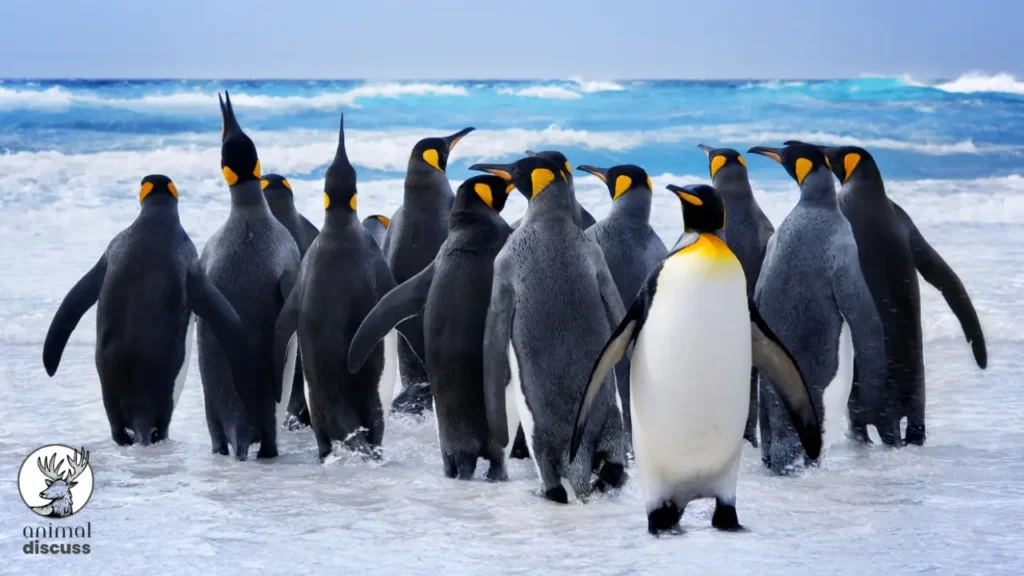
There are just about ten species of penguins that inhabit the sub-Antarctic and Antarctic regions. The remaining species are found in Ecuador, Chile, Peru, South Africa, Australia, and South America.
Let’s examine the habitats of the various penguin species in the table below.
| Species | Habitat |
|---|---|
| Emperor penguin | Antarctica |
| King penguin | South America, Antarctica, Africa |
| Gentoo penguin | Antarctic Peninsula, Falkland, South Georgia, Kerguelen, South Shetland, Heard and Macquarie Islands |
| Adelie | Antarctica |
| Chinstrap | Antarctica, South Orkneys, South Sandwich Islands, South Georgia Island, South Shetland, Balleny and Bouvet |
| Rockhopper penguin | Falkland Islands, Islands off Argentina and southern Chile, islands of the Indian and western Pacific oceans |
| Fiordland penguin | Fiordland coast and Stewart Island |
| Snares penguin | Snares Island, New Zealand |
| Macaroni penguins | Antarctica, South America, Africa |
| Royal penguins | Antarctica |
| Yellow-eyed penguin | Stewart Island and Auckland and Campbell Islands, South-east coast of South Island |
| Little penguins | New Zealand, Chatham Islands, Tasmania, and South Australia, Banks and Peninsula of New Zealand and Motunau Island |
| African penguin | Southwestern coast of Africa |
| Humboldt Penguin | South America |
| Magellanic Penguin | Falkland Islands, South Chile and South Argentina |
| Galapagos Penguin | Galapagos Islands |
Emperor penguin
The Antarctic continent’s compacted ice and shoreline are home to emperor penguins. They reside in the Deep South. Their breeding colonies are located in places with icebergs and cliffs that offer protection from wind.
King penguin
The Subantarctic islands are the home of King penguin, the second largest species of penguin. These penguins also live in the Tierra del Fuego, the Falkland Islands, and other temperate islands of the region.
King penguins used to breed in Patagonia. However, they no longer reside or breed in Patagonia or any place in South America.
Gentoo penguin
The Gentoo Penguins live in the Antarctic Peninsula and on several islands around this frozen continent. You can find their breeding colonies in several subantarctic islands.
These species breed on surfaces devoid of ice. They like to nest in between grass tufts and in shallow coastal locations.
Smaller colonies of these penguins are on the Macquarie Island, Heard Islands, Crozet Islands, South Shetland Islands, and the Antarctic Peninsula.
On the other hand, the biggest colonies are on the Falkland Islands, South Georgia, the South Sandwich Islands, and the Kerguelen Islands.
Adelie Penguin
The Adelie Penguins live only in Antarctica. These penguins prefer ice-free areas. So, they reside on distant islands and rocky beaches along Antarctica’s coast. Most of the Adelie Penguins live in the Ross Sea.
Chinstrap Penguin
Breeding locations for Chinstrap penguins include Antarctica, Argentina, South Georgia, the South Sandwich Islands, Bouvet Island, Chile, and the French Southern Territories. They inhabit icebergs, islands, and the coastline.
Rockhopper penguin
The Southern Rockhopper penguins live in the southernmost point of South America. Sub-Antarctic islands in the Indian Ocean and the Pacific Ocean serve as breeding grounds for these penguins.
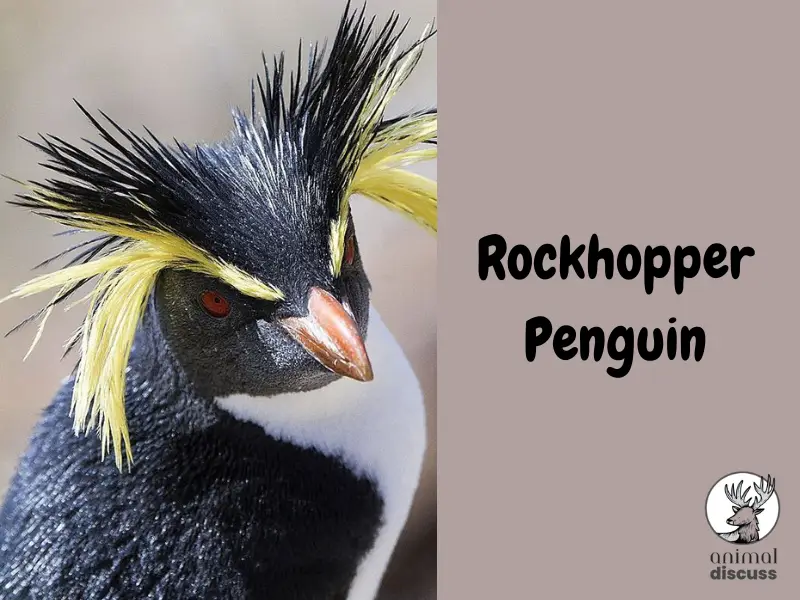
Conversely, the islands of Tristan da Cunha as well as the Amsterdam and St. Paul Islands are breeding grounds for Northern Rockhoppers.
Fiordland penguin
This is a penguin from New Zealand. Stewart Island, the Fiordland coast, and its offshore islands are the breeding grounds of these birds. Likewise, numerous environments, like dense coastal shrubs, mature temperate rain forests, and sea caves, are home to Fiordland penguin nests.
They are also visible making their nests behind large rocks. These penguins live in niches in rocks, hollows left by fallen trees, and among roots and stones.
Snares penguin
The Snares Islands, off the southern coast of New Zealand, are home to these penguins. They usually live on protected beaches there. You can also observe them around the shores of Stewart Island, Chatham Islands, Tasmania, and southern Australia.
Macaroni penguins
The Macaroni penguins live on cliffs and rocks in rocky and aquatic environments. Their range in South America extends from southern Chile to the South Sandwich Islands, South Georgia, South Orkney Islands, and the Falkland Islands.
They also travel great distances in search of food. These penguins go as far as Tristan da Cunha, South Africa, southern Brazil.
Royal penguins
There are royal penguins in the waters around Antarctica. They settled on Macquarie Island, which is situated in the southwest of the Pacific Ocean.
Withal, they reproduce on beaches and grassy slopes between one and six kilometers away from the coast. There, you can find them amidst small bushes, boulders, and tussock grass.
Yellow-eyed penguin
The southern regions of New Zealand are home to yellow-eyed penguins. Their range includes the sub-Antarctic islands of Auckland and Campbell Islands, as well as the southeast coast of the South Island. This species is most concentrated on the Otago Peninsula, Stewart Island, and the Foveaux Strait.
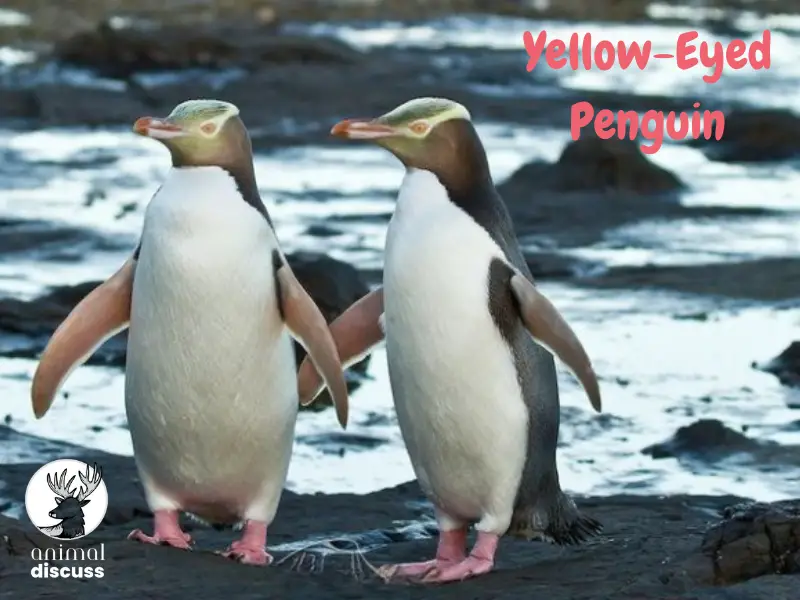
However, these penguins normally build their nests in small bays or on the promontory sections of larger bays, on slopes, gullies, or directly on the shore. They favor areas with populations of lupin and flax, and they nest in forests or shrubs.
Little penguin
The Chatham Islands on New Zealand’s coastline where little blue penguins breed. During the breeding season, they stay close to the coast and spend most of their time in the water.
African penguin
The African Penguins live on the coasts of Namibia and South Africa. They reside in colonies on 24 islands between Namibia and Algoa Bay, close to Port Elizabeth, South Africa.
However, these penguins do not migrate. They spend most of their life at sea and only come onshore to molt and breed.
Humboldt Penguin
There is only one location for Humboldt penguins in South America is the west coast. They breed from subtropical Peru to the dry and barren coastal districts in southern Chile.
Their distribution is limited to the coast and outlying islands. Isla Chañaral is home to the largest significant breeding colony in Chile.
Again, during the breeding season, Humboldt penguins naturally remain close to their nests. They travel great distances when food shortages or environmental changes occur. And breeding sites for Humboldt penguins include beaches, vegetated scrapes, and cliff tops.
Magellanic Penguin
The natural home of Magellanic penguins is South America. You can see them on the Falkland Islands, Chile, and Argentina’s shores. And their breeding can take place under bushes, on the surface, or in burrows.
Galapagos Penguin
This is the only penguin that lives north of the equator. Galápagos penguins primarily inhabit the shores of Africa and mainland South America.
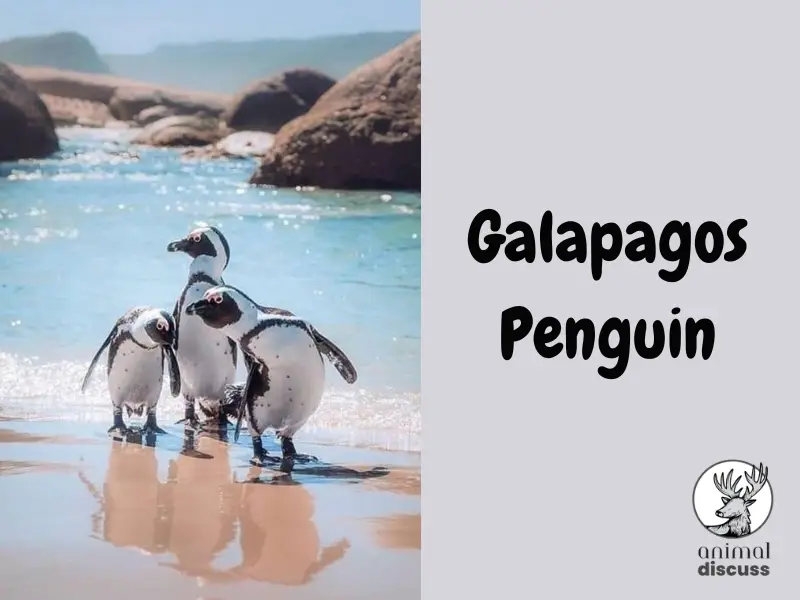
They have adapted to their warm habitat by learning how to stay cool. These charming birds have a 15–20-year lifespan, but in the wild, it could be drastically shortened by predation.
How Do Penguins Choose Their Habitat?
Penguins are flightless marine birds, so they choose the locations that are suitable for breeding. They also choose places that are free from predators and parasites. Besides, they prefer places close to the ocean where the food is abundant.
However, different species of penguins prefer different habitats. For example, the Emperor penguin prefers the icy Antarctic Coast where they breed on beaches. Conversely, the Galapagos Penguin prefers islands near the equator where they breed in rocky areas.
How Does the Habitat of Penguins Influence Their Diet?
The habitat of penguins influences their diet in many ways. I will go into more depth about how penguin habitat affects their eating habits below.
For example, the penguins that live in Antarctica primarily eat Krill, squid, and fish which are plentiful in the polar waters. As they live in colder regions, they have to deal with harsher environmental conditions.
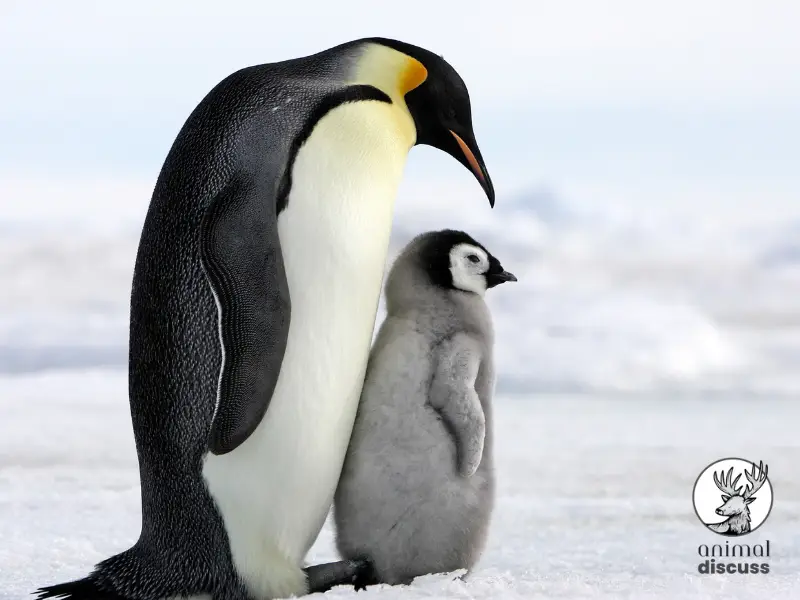
And this increases their energy expenditure. Therefore, they need to consume more food and store more fat to cope with these challenges. The Emperor penguins of Antarctica eat 2-3 kg of food.
Likewise, penguins that inhabit warmer climates consume marine iguanas, tiny fish, and crustaceans, such as Galapagos penguins. And living in such weather conditions, they have to deal with higher temperatures. That may cause heat stress and dehydration.
Thus, they need to consume less food and store less fat to avoid overheating and predation. That’s why Galapagos penguins eat less because they do need to store fat.
Accordingly, the habitat influences the energy requirements and intake of penguins. Penguins need to balance their energy expenditure and intake to survive and reproduce in their habitats.
Habitat Threats that Penguins Face
Penguins are adorable sea birds of the southern hemisphere. However, these flightless sea birds face numerous threats withing their natural habitat. Let’s discover the habitat challenges penguins face.
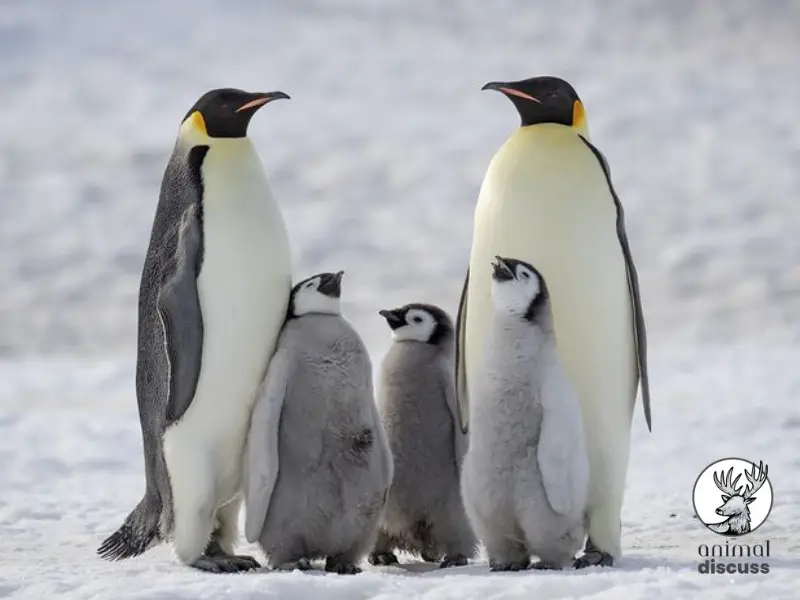
Overfishing
Penguins diet mainly consists of different types of fish. Hence, overfishing causes decrease in their food stock. And they have to switch to other food sources that are less nutrient.
For an instance, Namibian jackass penguin’s primary diet was sardines in 1950s. And sardine supplies collapsed in 1970s due to overfishing. So, the penguins had to change their diet.
Bycatch
Moreover, some commercial fisherman to catch fish drops massive net into the ocean. Sometimes, penguins or other non-targeted animals get tangled. The entangled penguins may suffer injuries or even drown.
Predators
We know that penguins are predatory birds. However, they are also prey of seals, sharks, sea lion, and Antarctic fur seals. Because of these predators, penguins face challenges in their natural habitat.
Furthermore, they also face threats from invasive predators such as black rats, red foxes and house mice. For instance, red foxes were introduced to Australia’s mainland to control rabbit.
These foxes crossed to the middle islands where penguins reside at low tide and hunt the penguins. Therefore, the penguin’s population declined in the early 2000s.
Industrial Development
Rapid industrializations are another cause of the declination of many animals. Penguins are also victim of industrial development. Because of commercial pots, mines, penguins face habitat loss.
Almost 80 percent of the Humboldt penguins worldwide are found in the islands off the coast of Punta de Choros in Chile. However, a commercial port, and two new open-pit mines are posing a threat to this important nesting site.
Pollution
This is a common threat. Water pollution result in a decrease of food sources of marine animals. This contributes to the declination of penguins’ population.
Withal, plastic pollution is another big threat to penguins and other marine animals. A 2015 study shows that 99% of the 186 species covered in the report would be consuming plastic waste by 2050.
Climate Change
Climate change is another threat to the habitats of penguin. The rise of temperature cause ice melting which in turn increase the sea level. This shrinks the nesting area of penguins.
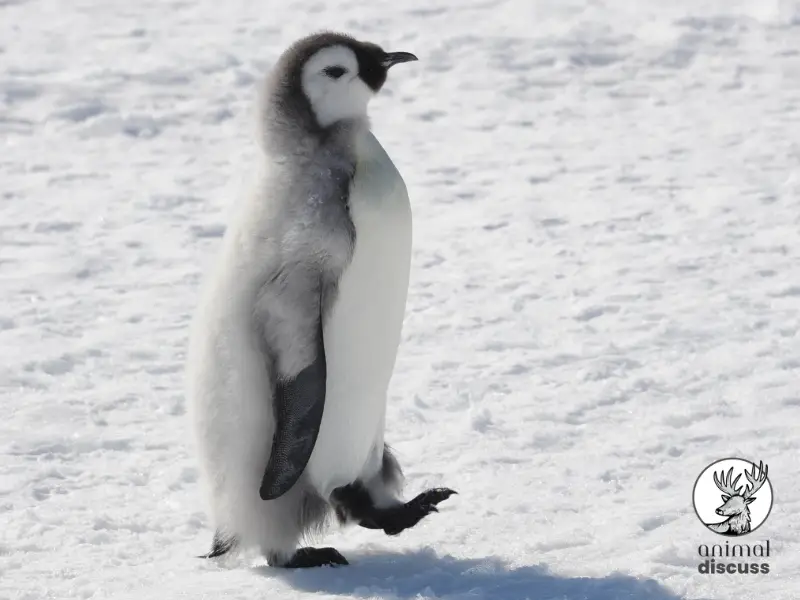
Besides, frequent rainstorms, extreme weathers cause deaths to many young chicks. Studies shows that over the long 27 years, penguins population fell by 20% because of storms and extreme weather.
Conservation status of Penguins
Many species of penguins are in danger of extinction. The International Union for the Conservation of Nature (IUCN) has created a red list of the conservation status of penguins.
IUCN has enlisted Yellow-eyed penguin, Rockhopper Penguin, Galapagos Penguin, Crested, African Penguin as “endangered”. They are at very high risk of extinction in the wild.
According to the list, Fiordland Penguin, Humboldt Penguin, Macaroni Penguin, Snares Penguin are “vulnerable”. They are at high risk of extinction. Withal, the Emperor and Royal penguin are “Near threatened”.
How Can We Contribute to Preserve Penguins’ Natural Habitat?
It is evident that penguins are facing habitat threats mostly due to our carelessness. We can contribute to preserve penguins’ natural habitat in several ways.
- We should be more careful about polluting ocean water
- Then, we can cut out plastic uses to prevent plastic pollution
- We should eat only seafood that is produced by sustainable, well-managed fisheries
- Also, we can do campaigns to stop overfishing, lessen bycatch, and save marine environments
- And to prevent climate change, we can reduce our carbon footprint. For example, we should eat less meat, plant more trees and buy less stuff
How to Create Ideal Habitat for the Penguins in Captivity
Penguins are exotic animals, and you cannot keep penguins as pet. However, for conserving endangered species, penguins are kept in zoo and aquarium. In captivity, penguins should be given utmost care for their healthy development.
In that regard, the habitat of penguins in captivity should resembles their habitat in the wide. Let’s take a look at how to create ideal habitat for the Penguins in Captivity.
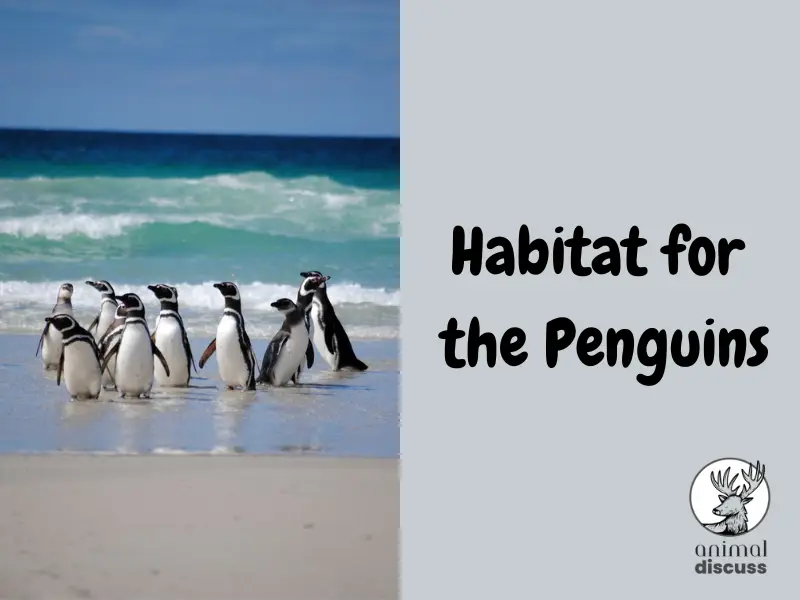
To begin with, penguins are sea birds, and they need extended water bodies. You can see the example of the Detroit Zoo. They installed a 25-foot-deep pool in place of the 6-foot-deep pool for the penguins in that zoo.
Furthermore, the temperature in the captivity should be ideal according to the species. Some species such as the Emperor, Adelie are from Antarctica. Therefore, they require freezing temperature.
On the other hand, some penguins from warmer regions such as the Galapagos penguins require temperature above 20° C.
Moreover, penguins are social animals, and they live in groups. So, penguins should be kept in a group of 20 or more penguins.
FAQs
Here are some frequently asked questions about the habitat of penguins below.
Conclusion
The penguins live near the southern hemisphere which is below the equator. However, the majority of the species live in Antarctica. Others live in South America, New Zealand, and South Africa. Due to climate change, global warming and many human activities penguins face habitat threats.
We can take necessary steps such as raising awareness, and habitat preservation, reducing overfishing to conserve these remarkable birds. However, as conserving endangered species, the habitat of penguins in captivity should have a comfortable temperature range, clean water bodies, and lands with vegetation.
- https://animalia.bio/african-penguin
- https://animalcorner.org/animals/king-penguin/
- https://oceana.org/blog/top-5-threats-penguins-and-what-you-can-do-help/
- https://www.nationalgeographic.com/animals/article/penguins-are-slow-to-evolve-and-vulnerable-to-climate-change
- https://wildnet.org/penguins-charming-widespread-and-important/

